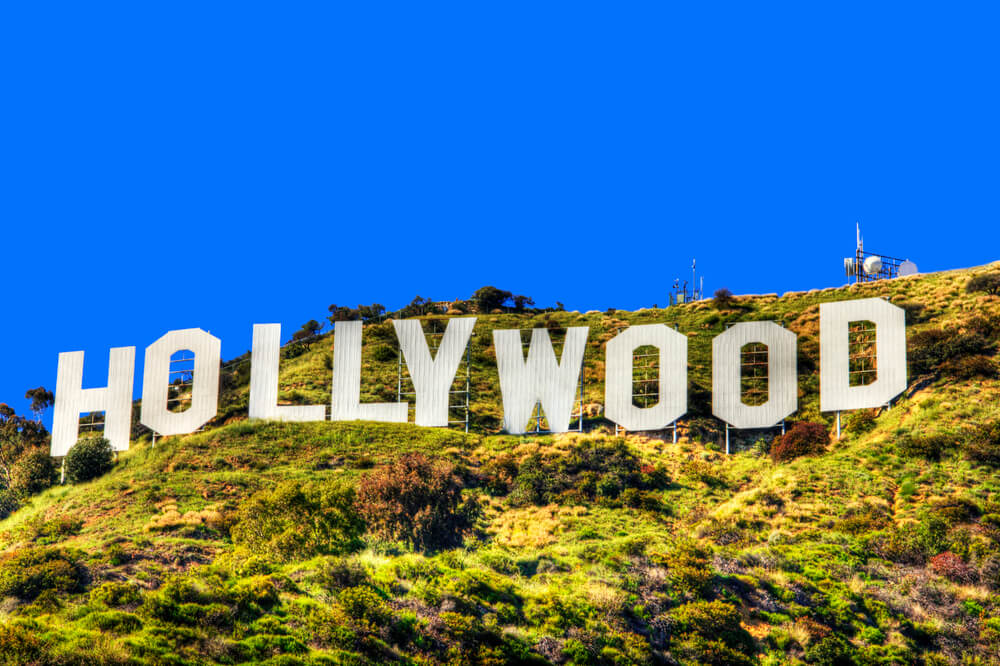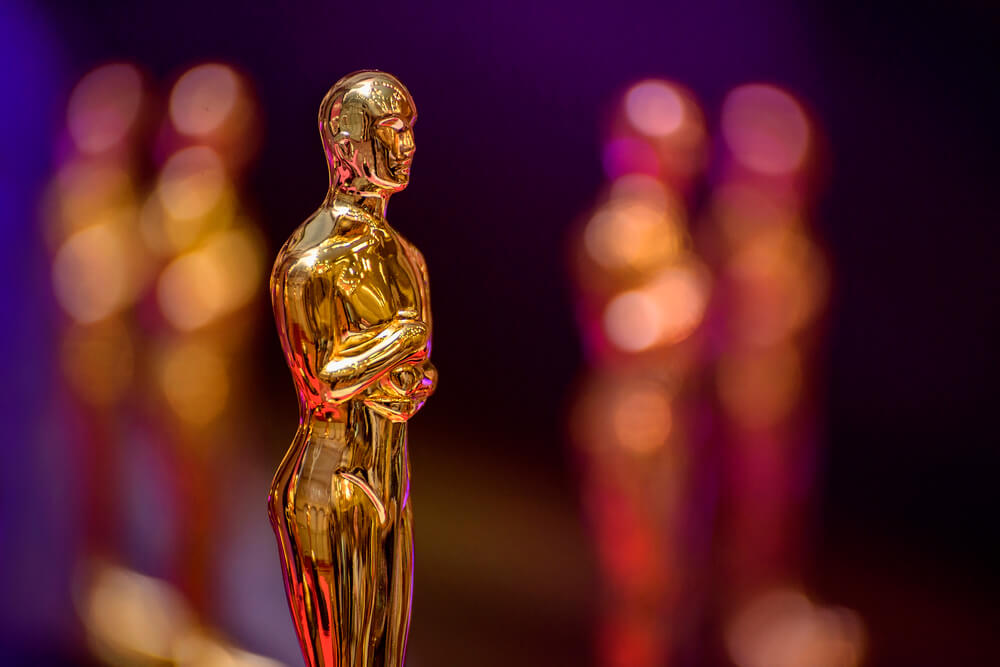7 come from Ukraine, who created the American cinema
During the years of Ukraine's independence, not a single Ukrainian film received an Oscar. Although for the same three decades there was not a single list of this award, where among the laureates or at least the nominees would not appear a film that was created or starred by filmmakers with Ukrainian roots. However, why be surprised if even the American Film Academy, which presents the Oscar, was created by a native of this country.

Фото: Depositphotos
Ukrainian immigrants who created American cinema:
1. Louis bart meier, movie emperor
Starting from one cinema in 1907, after a few years he was the owner of an entire cinema network, and in 1924 he headed the country's largest film corporation, Metro-Goldwyn-Mayer (MGM), whose films are known to everyone by the lion’s roar at the very beginning.
For 27 years, the studio managed by Mayer has produced a large number of successful films. Among the hundred best films in the United States, according to the American Film Institute (AFI), there are three works from the MGM studio in the top ten.

Фото: Depositphotos
The best musical of all time, Singin' in the Rain, the fairy-tale fantasy The Wizard of Oz, and the world-famous masterpiece Gone with the Wind. The producer of the latter, by the way, was Mayer’s son-in-law, David Selznick, the son of Kyiv-born Lewis Selznick. With such family ties, the “film emperor” created, according to The Guardian, a majestic world dynasty.
His other achievement was the collection of an outstanding pleiad of actors: they said that MGM had more stars than sky. Not surprisingly, it is Mayer that American actors, like filmmakers in general, should thank for the Oscar.
In 1927, he founded the American Film Academy, which, from 1929-th to the present day, presents the most prestigious award in the world of cinema.
2. Maya Derenmother of american avant-garde
Rarely does a conversation about American avant-garde cinema pass without the name of Maya Deren. Film scholars call her either the “mother of experimental cinema” or its “priestess.” The influence of this filmmaker can be traced in the work of hundreds of directors. Some argue that the key to deciphering David Lynch's films lies in her work.
Eleonora Derenkovskaya (real name of Maya Deren) was born in 1917 in Kiev. In 1922, she immigrated with her parents to the States, where, as an adult, she criticized the Hollywood movie model for its dependence on the public and money. She argued that the audience can be spoken by completely different means.
In 1943, together with her second husband, an emigrant from the Czech Republic, Alexander Gammid, she shot her first and main masterpiece, “Midday Nets” - a dream film, a phantasmagoria filled with the inner power of ballet poetry. Over the next 15 years, Maya shoots seven more films (some of them remain unfinished), becomes interested in voodoo culture, writes poetry and ethnographic research.
In every way supports and develops the independent cinema of America, for which he creates the Foundation for Creative Cinema, and in 1986, the American Film Institute establishes the Maya Derain Award for independent directors.
3. Lee Strasbergfather of acting in America
In the 50-ies of the twentieth century in the US cinema revolution occurred, started a little earlier in the theater.
Director Elia Kazan later described it this way: “For the first time, there were sensations, emotions and experiences of an ordinary person on stage. The acting game has become naturalistic, the old school narcissism has become a thing of the past. ”
The key figure of these screen transformations was Lee Strasberg, who came from the village of Budanov (now the Ternopil region). Born in 1901, six years later, the family immigrated to America. Already in the United States, our fellow countryman became the first co-founder of the theater group and showed several performances, and then began working in the Actors Studio and soon headed it.
In 1969 he created a theater institute named after him. Among the graduates of the Lee Strasberg School are Marlon Brando, Marilyn Monroe, James Dean and Sidney Poitier - cult Hollywood stars, symbols of their era and “the best American actors of all time,” as the American Film Institute called them. And also Jack Nicholson, Paul Newman, Jane Fonda, Dustin Hoffman, Harvey Keitel and others. Most of which are still being successfully filmed to this day.
Strasberg himself rarely appeared on the screen, but his appearance did not go unnoticed. So, for a minor role in the “Godfather. Part of 2, he was nominated for an Oscar, but he conceded an award to his student Robert De Niro.
4. Paul Mooneythe genius of reincarnation
Paul Muni, a native of Lviv, became one of the key American actors of the beginning of the 20th century (born in 1895, immigrated to the USA at the age of five).
Having started his career in the theater, only at the age of 34 for the first time he acted in films. And already the debut role brings him a nomination for an Oscar. In 1932, he appears on screen in the gangster drama "Scarface" by Howard Gawks, which is still considered one of the best tapes about organized crime.
The prototype of the main character was Al Capone, and the events in the film are depicted with naturalism and truthfulness unprecedented for that time. Even after all the amendments made, the twice-modified final and cut scenes about corruption in the authorities, the picture had serious problems with the release of screens.
Paul Muni continues to embody the diverse symbols of the era and is nominated four times for an Oscar. Finally, this golden statuette, as well as the award at the Venice Film Festival, receives for the role of an outstanding chemist and microbiologist in the drama “The Tale of Louis Pasteur”.
Soon, Mooney will play in two more biographical films: he will put on the screen French writer Emile Zola and Mexican politician Benito Juarez. It is these tapes that will finally form the genre of biographical drama in American cinema.
5. Otto Ludwig Premingerpioneer of forbidden topics
The scandal surrounding Scarface and several other films prompted censorship to increase its pressure. The dictation of the “Geys Code” took place in Hollywood from the 1930s to the 1950s (and was officially canceled only in 1967s). Sexuality and cruelty were minimized.
On Otto Preminger, who was born in the town of Vizhnitsa (now Chernivtsi region) in 1905 and immigrated to the United States in 1935, these taboos did not work. Starting a career with the film "Noir" (pessimistic crime dramas, dominated by dark colors, and always to blame a sexy woman), Preminger took off several key tapes of the genre. In particular, his "Laura" has received great recognition, and AFI has included this picture in the top five best American detectives.
At the start of 1950, Otto seriously takes on the loosening of the Geyss code. Sexual frivolity in the movie "Moon Blue" was a reason for the ban, but Preminger still let him out. Viewers instead of the boycott, which was called censorship and religious committees, crowds went to the cinema.
In other films, Preminger raises issues of rape, single mothers and sexual deviations, regularly causing problems with the censorship committee, which is gradually forced to "loosen its grip." And “The Man with the Golden Hand” (1955), a drug addict drama with Frank Sinatra, forced to lift the ban on the topic of drug addiction in the movie.
6. Dmitry Temkin, Ukrainian sound of Hollywood
The number of people from Ukraine who have associated themselves with writing music is impressive. Perhaps the best explanation for such success is in the words of Kvitka Tsisyk, whose song was awarded an Oscar in 1978: “I sing in English, but I put in Ukrainian soul.”
Along with his genes, musical talent was passed on to Dmitry Tyomkin, who was born in 1894 in Kremenchug (now Poltava region). In 1921 he emigrated to Germany, and subsequently to France and the USA, where he quickly became one of the most famous composers in Hollywood.
In the year 1937 was first nominated for an Oscar. After which there were still 23 nominations, four of which were successful.

Фото: Depositphotos
In his entire career, Tyomkin wrote music to more than a hundred films, including a fair amount of recognized American classics.
14 films were included in the National Register at the Library of Congress for perpetual preservation as having “cultural, historical or aesthetic significance.” His music for such purely American genres as Western and noir turned out to be popular.
When asked how an immigrant could feel the spirit of the prairies so accurately, Dmitry answered: “The steppe is the steppe.” The works of this composer are still used today, in particular, they are heard in such popular cartoons as “Shrek 2”, “Happy Feet 2” and in the film “Inglourious Basterds” by Quentin Tarantino.
7. Val luteonthe godfather of horror
Horror in American cinema occupies a special place. Already in 1930, horror stories about vampires, werewolves, zombies filled up local screens. However, in the 1940, the public was frightened by a completely different film, united by the name of Val Lewton in the credits.
Vladimir Leventon was born in Yalta in the 1904 year, from where he immigrated to the United States in 1909. There he chose the path of the reporter and writer. However, due to the unbridled imagination, in particular, in journalistic materials, he was forced to leave the editorial office.
It is not surprising that Lewton was in Hollywood, successfully settled there and subsequently became famous as an editor and handyman. And at 1942, he led the horror films department at RKO Studios, where he produced 11 films, nine of which are forever history.
His "Cat People" forced viewers and filmmakers to take a fresh look at horror. Financial limitations were transformed into an artistic style, the film was filled with symbols and poetics, which makes it interesting even for our contemporaries.
The authors came up with a number of techniques that continue to actively use the current directors. The following tapes produced by Lewton not only offered a fresh list of themes for horror films, but almost for the first time they demonstrated the possibility of double interpretations and socially relevant cuts in the US entertainment cinema.
Read also on ForumDaily:
'I will never Americanize': a Russian musician spoke about life in the USA
Cinema in Russian. 7 of the best Russian films of the year
Russian online cinema has become available on a popular console
How Uzbeks live in America and where the diaspora settles
Cinema in Russian. What to watch in the autumn evenings: the best detective series from Russia
Cinema in Russian. What to see in Halloween: the best Russian horror films
28 resistant English expressions that every immigrant needs to know
Subscribe to ForumDaily on Google NewsDo you want more important and interesting news about life in the USA and immigration to America? — support us donate! Also subscribe to our page Facebook. Select the “Priority in display” option and read us first. Also, don't forget to subscribe to our РєР ° РЅР ° Р »РІ Telegram and Instagram- there is a lot of interesting things there. And join thousands of readers ForumDaily New York — there you will find a lot of interesting and positive information about life in the metropolis.











